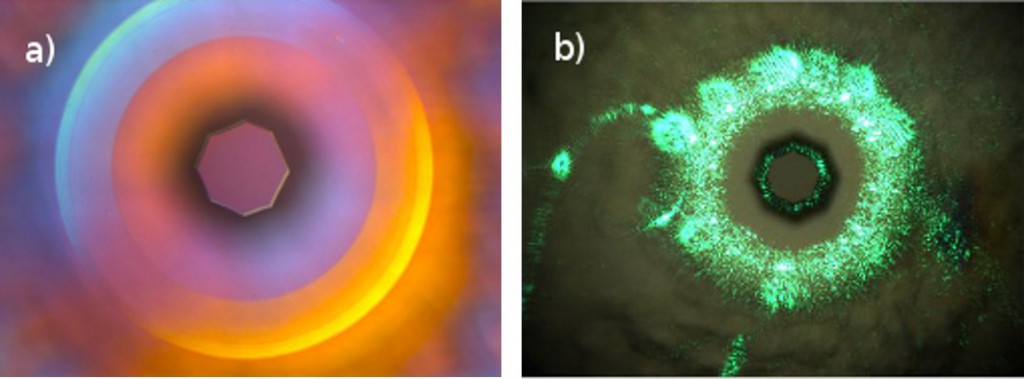Overview
One of the greatest challenges of non-linear optics is to associate the confinement of light and the control of the chromatic dispersion to materials with high non-linear susceptibility and low optical absorption. Although some special optical fibers present both these characteristics, they offer limited possibilities for on-chip integration. On the other hand, the current maturity of the microfabrication processes allow us to manufacture waveguides and microcavities monolithically, and with very high non-linear coefficients. This combination makes the non-linear nanophotonics highly competitive with technologies based on optical fibers.
The manufactured microcavities in LPD have been used to explore non-linear effects based on the electronic response of the materials, among these we highlight the generation of harmonics and the mixture of four waves. In these effects two important parameters are, the optical intensity and the dispersion of the group velocity. The high optical intensity proportioned by the cavities is responsible to create intense electromagnetic fields and induce the non-linear effect. Yet the dispersion of group velocity guarantees that the radiation generated by the non-linear effects receives an additive contribution of all the atoms that compose the material, ensuring an efficient generation of radiation. For instance, on figure 1 we illustrate the green radiation being generated by a cavity that was excited by an infrared laser, this process is denominated generation of third harmonic.
Figure 1: Non-linear nanophotonics. (a) Photography of a microcavity with ultra-high quality factor. (b) Photography of the process of third harmonic generation of an infrared laser by the same cavity.

